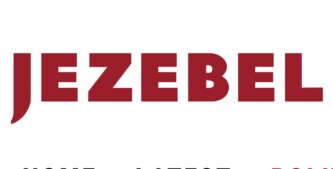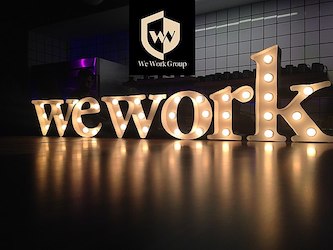The Royal Mint, which makes coins for the UK, has started a new project to recycle electronic waste (e-waste) and get gold from it. This is part of a bigger plan to tackle the problem of old electronic devices being thrown away. In 2022, the United Nations reported that there were 62 million tonnes of e-waste, and this number could rise by about one-third by 2030. To help with this, the Royal Mint has built a big facility in Llantrisant, Wales, where they will recover precious metals from old circuit boards. At first, the gold they collect will be used to make jewelry, but they also plan to create special coins in the future.
At the new plant, the process of getting gold from e-waste starts by heating circuit boards to break them down into different parts. These materials then move along a conveyor belt where they are carefully sorted and processed. This includes steps like sieving, slicing, and dicing. Inga Doak, who is in charge of sustainability, calls this process “urban mining.” She highlights how important it is to see the value in the waste we create as a society. The main goal is to recover gold from these discarded items, reminding us that gold is a limited resource.
Once they find the parts that contain gold, they send them to a chemical plant on-site. Here, a special solution is used to extract the gold from the materials. This method is great because it uses less energy and works at room temperature, making it better for the environment than traditional methods that often use harmful chemicals and require a lot of energy. The end result is a powder that has pure gold, which can be turned into a shiny nugget by heating it in a furnace.
The Royal Mint plans to recycle over 4,000 tonnes of e-waste each year, which should give them about 450 kilograms of gold worth around £27 million based on current prices. This new focus on processing e-waste is a big change for the Royal Mint, which has been making coins for over a thousand years. As cash use declines, the company is looking for new ways to stay financially stable and keep jobs for its workers. Besides recovering gold, the Royal Mint is also thinking about how to reuse other materials like aluminum, copper, tin, and steel from the circuit boards. They are even exploring if ground-up circuit boards can be used in construction. This approach not only helps with the e-waste problem but also supports sustainable practices by making the most of available resources.
Original news source: Royal Mint starts turning e-waste into gold (BBC)
🎧 Listen:
Slow
Normal
Fast
📖 Vocabulary:
| 1 | facility | A place or building where a specific activity happens |
| 2 | recover | To get something back or regain it |
| 3 | sustainability | The ability to keep something going without using up resources |
| 4 | discarded | Thrown away or no longer wanted |
| 5 | extract | To take something out, especially by using a special method |
| 6 | furnace | A device used to heat things to a very high temperature |
| 7 | decline | To become less or decrease |
| 8 | financially | Related to money or how money is managed |
| 9 | stable | Not likely to change or fail; steady |
| 10 | reuse | To use something again |
| 11 | exploring | Looking into or investigating something |
| 12 | construction | The process of building or making something |
| 13 | supports | Helps or gives assistance to something |
| 14 | available | Ready to be used or obtained |
| 15 | resources | Supplies or materials that can be used to do something |
Group or Classroom Activities
Warm-up Activities:
– CHARADES
Instructions: Divide the class into two teams. Each team takes turns sending a member to act out a word or phrase related to the article (e.g., “recycle,” “gold,” “e-waste”). The other team must guess what it is within a time limit.
– OPINION POLL
Instructions: Provide students with statements derived from the article (e.g., “Recycling e-waste is more important than recycling plastic”). Students should walk around the classroom, asking their classmates whether they agree or disagree and why.
– MIND MAP
Instructions: On the board, write the central theme “E-Waste and Recycling.” In small groups, students brainstorm and add related ideas, terms, and concepts mentioned in the article, creating a visual representation of their thoughts.
– HEADLINE CREATION
Instructions: Ask students to come up with a catchy headline for the article. They should focus on summarizing the main point creatively. Once they have their headlines, they can share with the class and discuss which ones they found most effective and why.
– PAS THE STORY
Instructions: In small groups, students will take turns adding to a story that starts with the sentence, “The Royal Mint decided to take a bold step towards sustainability…” Each student adds one sentence at a time, building on the previous contributions while incorporating elements from the article.
🤔 Comprehension Questions:
1. What is the main goal of the Royal Mint’s new project regarding electronic waste?
2. How much e-waste was reported by the United Nations in 2022, and what is the expected increase by 2030?
3. Describe the initial steps taken at the Royal Mint’s facility to recover gold from e-waste.
4. What does Inga Doak mean when she refers to the recycling process as “urban mining”?
5. Why is the method used to extract gold from e-waste considered better for the environment compared to traditional methods?
6. How much e-waste does the Royal Mint plan to recycle each year, and how much gold do they expect to recover from it?
7. What challenges is the Royal Mint facing as cash use declines, and how are they addressing these challenges?
8. Besides gold, what other materials is the Royal Mint interested in recovering from circuit boards, and what potential use are they exploring for them?
Go to answers ⇩
🎧✍️ Listen and Fill in the Gaps:
The Royal Mint, which makes (1)______ for the UK, has (2)______ a new project to recycle electronic waste (e-waste) and get gold from it. This is part of a bigger plan to tackle the problem of old electronic devices being thrown away. In 2022, the (3)______ Nations reported that there were 62 million tonnes of e-waste, and this (4)______ could rise by about one-third by 2030. To help with this, the Royal Mint has built a big facility in Llantrisant, Wales, where they will recover precious metals from old circuit boards. At first, the gold they collect will be used to make jewelry, but they also plan to create special coins in the future.
At the new plant, the process of getting gold from e-waste starts by (5)______ circuit boards to break them down into different parts. These (6)______ then move along a conveyor belt where they are carefully sorted and processed. This (7)______ steps like sieving, slicing, and dicing. Inga Doak, who is in charge of sustainability, calls this process “urban mining.” She highlights how important it is to see the value in the waste we create as a society. The main goal is to (8)______ gold from these discarded items, reminding us that gold is a limited resource.
Once they find the parts that contain gold, they send them to a chemical plant on-site. Here, a special (9)______ is used to extract the gold from the materials. This method is great because it uses less energy and works at room temperature, making it better for the environment than traditional methods that often use harmful chemicals and require a lot of energy. The end result is a powder that has pure gold, which can be turned into a shiny nugget by heating it in a furnace.
The Royal Mint plans to recycle over 4,000 (10)______ of e-waste each year, which should give them about 450 kilograms of gold worth around £27 million (11)______ on (12)______ prices. This new focus on processing e-waste is a big change for the Royal Mint, which has been making coins for over a thousand years. As cash use declines, the company is looking for new ways to stay financially (13)______ and keep jobs for its workers. Besides recovering gold, the Royal Mint is also thinking about how to reuse other materials like aluminum, copper, tin, and (14)______ from the circuit (15)______. They are even exploring if ground-up circuit boards can be used in construction. This approach not only helps with the e-waste problem but also supports (16)______ practices by making the most of available resources.
Go to answers ⇩
💬 Discussion Questions:
Students can ask a partner these questions, or discuss them as a group.
1. What is your opinion on recycling e-waste? Do you think it’s important? Why or why not?
2. How would you feel if you found out that your old electronics could be turned into gold?
3. Do you think people are aware of the amount of e-waste they create? Why or why not?
4. What is a creative way you can think of to reuse old electronic devices?
5. How do you feel about the idea of “urban mining”? Does it sound like a good solution to you?
6. Do you like the idea of using recycled materials to make jewelry or coins? Why or why not?
7. What do you think are the biggest challenges in recycling e-waste?
8. How would you feel if you had to give up using certain electronic devices to help the environment?
9. Do you think schools should teach more about the importance of recycling? Why or why not?
10. What is a sustainable practice you follow in your daily life?
11. How do you think the decline of cash use affects companies like the Royal Mint?
12. Do you think it’s possible to completely eliminate e-waste in the future? Why or why not?
13. What is a benefit of using less energy in recycling processes, like the one described in the article?
14. How would you feel if your community started a program to recycle e-waste?
15. Do you think people should be more responsible for disposing of their electronic devices? Why or why not?
Individual Activities
📖💭 Vocabulary Meanings:
Match each word to its meaning.
Words:
1. facility
2. recover
3. sustainability
4. discarded
5. extract
6. furnace
7. decline
8. financially
9. stable
10. reuse
11. exploring
12. construction
13. supports
14. available
15. resources
Meanings:
(A) The ability to keep something going without using up resources
(B) A place or building where a specific activity happens
(C) Ready to be used or obtained
(D) The process of building or making something
(E) To take something out, especially by using a special method
(F) Related to money or how money is managed
(G) A device used to heat things to a very high temperature
(H) Supplies or materials that can be used to do something
(I) Not likely to change or fail; steady
(J) Looking into or investigating something
(K) To get something back or regain it
(L) To become less or decrease
(M) To use something again
(N) Thrown away or no longer wanted
(O) Helps or gives assistance to something
Go to answers ⇩
🔡 Multiple Choice Questions:
1. What is the main purpose of the Royal Mint’s new project?
(a) To create new types of coins
(b) To reduce the use of cash
(c) To build a new facility in Wales
(d) To recycle electronic waste and recover gold
2. How much e-waste was reported by the United Nations in 2022?
(a) 50 million tonnes
(b) 62 million tonnes
(c) 70 million tonnes
(d) 80 million tonnes
3. Where is the Royal Mint’s new facility located?
(a) Llantrisant, Wales
(b) London, England
(c) Edinburgh, Scotland
(d) Dublin, Ireland
4. What term does Inga Doak use to describe the process of recovering gold from e-waste?
(a) E-waste recycling
(b) Electronic recovery
(c) Resource extraction
(d) Urban mining
5. What is the environmental benefit of the method used to extract gold from e-waste?
(a) It produces more waste
(b) It uses less energy and works at room temperature
(c) It requires more harmful chemicals
(d) It is faster than traditional methods
6. How much gold does the Royal Mint plan to recover from e-waste each year?
(a) 450 kilograms
(b) 300 kilograms
(c) 600 kilograms
(d) 200 kilograms
7. What is one of the other materials the Royal Mint is considering reusing from circuit boards?
(a) Plastic
(b) Glass
(c) Aluminum
(d) Rubber
8. Why is the Royal Mint looking for new ways to stay financially stable?
(a) Because they want to expand their coin collection
(b) Because they are losing money on coins
(c) Because cash use is declining
(d) Because they want to hire more workers
Go to answers ⇩
🕵️ True or False Questions:
1. The Royal Mint is also considering reusing other materials like aluminum, copper, tin, and steel from the circuit boards.
2. The Royal Mint aims to recycle over 4,000 tonnes of e-waste each year, which could yield about 450 kilograms of gold.
3. The Royal Mint has built a facility in Llantrisant, Wales, specifically for recovering precious stones from old circuit boards.
4. The extraction method used by the Royal Mint is more environmentally friendly than traditional methods, as it requires less energy and operates at room temperature.
5. The process of extracting gold involves cooling circuit boards and sorting the materials on a conveyor belt.
6. Initially, the silver collected from e-waste will be used to create jewelry.
7. In 2019, the United Nations reported that there were 62 million tonnes of e-waste worldwide.
8. The Royal Mint is starting a project to recycle electronic waste and extract gold from it.
Go to answers ⇩
📝 Write a Summary:
Write a summary of this news article in two sentences.
Check your writing now with the best free AI for English writing!
Writing Questions:
Answer the following questions. Write as much as you can for each answer.
Check your answers with our free English writing assistant!
1. What is the main purpose of the Royal Mint’s new project involving electronic waste?
2. How much e-waste did the United Nations report was produced in 2022?
3. What is the process called that Inga Doak uses to describe recovering valuable materials from waste?
4. Why is the method used to extract gold from e-waste considered better for the environment?
5. Besides gold, what other materials is the Royal Mint interested in recycling from old circuit boards?
✅ Answers
🤔✅ Comprehension Question Answers:
1. What is the main goal of the Royal Mint’s new project regarding electronic waste?
The main goal is to recycle electronic waste to recover gold and other precious metals, while also addressing the growing problem of e-waste.
2. How much e-waste was reported by the United Nations in 2022, and what is the expected increase by 2030?
In 2022, the United Nations reported 62 million tonnes of e-waste, and this number is expected to increase by about one-third by 2030.
3. Describe the initial steps taken at the Royal Mint’s facility to recover gold from e-waste.
The process starts by heating circuit boards to break them down. Then, the materials are sorted and processed through steps like sieving, slicing, and dicing.
4. What does Inga Doak mean when she refers to the recycling process as “urban mining”?
Inga Doak means that we should see the value in the waste we create and recognize that we can extract valuable resources, like gold, from discarded electronic items.
5. Why is the method used to extract gold from e-waste considered better for the environment compared to traditional methods?
This method is better because it uses less energy, works at room temperature, and avoids harmful chemicals that are often used in traditional gold extraction processes.
6. How much e-waste does the Royal Mint plan to recycle each year, and how much gold do they expect to recover from it?
The Royal Mint plans to recycle over 4,000 tonnes of e-waste each year, expecting to recover about 450 kilograms of gold.
7. What challenges is the Royal Mint facing as cash use declines, and how are they addressing these challenges?
The Royal Mint is facing challenges in staying financially stable and keeping jobs for workers. They are addressing these by finding new ways to utilize resources, like recycling e-waste.
8. Besides gold, what other materials is the Royal Mint interested in recovering from circuit boards, and what potential use are they exploring for them?
The Royal Mint is also interested in recovering aluminum, copper, tin, and steel from circuit boards. They are exploring the possibility of using ground-up circuit boards in construction.
Go back to questions ⇧
🎧✍️✅ Listen and Fill in the Gaps Answers:
(1) coins
(2) started
(3) United
(4) number
(5) heating
(6) materials
(7) includes
(8) recover
(9) solution
(10) tonnes
(11) based
(12) current
(13) stable
(14) steel
(15) boards
(16) sustainable
Go back to questions ⇧
📖💭✅ Vocabulary Meanings Answers:
1. facility
Answer: (B) A place or building where a specific activity happens
2. recover
Answer: (K) To get something back or regain it
3. sustainability
Answer: (A) The ability to keep something going without using up resources
4. discarded
Answer: (N) Thrown away or no longer wanted
5. extract
Answer: (E) To take something out, especially by using a special method
6. furnace
Answer: (G) A device used to heat things to a very high temperature
7. decline
Answer: (L) To become less or decrease
8. financially
Answer: (F) Related to money or how money is managed
9. stable
Answer: (I) Not likely to change or fail; steady
10. reuse
Answer: (M) To use something again
11. exploring
Answer: (J) Looking into or investigating something
12. construction
Answer: (D) The process of building or making something
13. supports
Answer: (O) Helps or gives assistance to something
14. available
Answer: (C) Ready to be used or obtained
15. resources
Answer: (H) Supplies or materials that can be used to do something
Go back to questions ⇧
🔡✅ Multiple Choice Answers:
1. What is the main purpose of the Royal Mint’s new project?
Answer: (d) To recycle electronic waste and recover gold
2. How much e-waste was reported by the United Nations in 2022?
Answer: (b) 62 million tonnes
3. Where is the Royal Mint’s new facility located?
Answer: (a) Llantrisant, Wales
4. What term does Inga Doak use to describe the process of recovering gold from e-waste?
Answer: (d) Urban mining
5. What is the environmental benefit of the method used to extract gold from e-waste?
Answer: (b) It uses less energy and works at room temperature
6. How much gold does the Royal Mint plan to recover from e-waste each year?
Answer: (a) 450 kilograms
7. What is one of the other materials the Royal Mint is considering reusing from circuit boards?
Answer: (c) Aluminum
8. Why is the Royal Mint looking for new ways to stay financially stable?
Answer: (c) Because cash use is declining
Go back to questions ⇧
🕵️✅ True or False Answers:
1. The Royal Mint is also considering reusing other materials like aluminum, copper, tin, and steel from the circuit boards. (Answer: True)
2. The Royal Mint aims to recycle over 4,000 tonnes of e-waste each year, which could yield about 450 kilograms of gold. (Answer: True)
3. The Royal Mint has built a facility in Llantrisant, Wales, specifically for recovering precious stones from old circuit boards. (Answer: False)
4. The extraction method used by the Royal Mint is more environmentally friendly than traditional methods, as it requires less energy and operates at room temperature. (Answer: True)
5. The process of extracting gold involves cooling circuit boards and sorting the materials on a conveyor belt. (Answer: False)
6. Initially, the silver collected from e-waste will be used to create jewelry. (Answer: False)
7. In 2019, the United Nations reported that there were 62 million tonnes of e-waste worldwide. (Answer: False)
8. The Royal Mint is starting a project to recycle electronic waste and extract gold from it. (Answer: True)
Go back to questions ⇧













